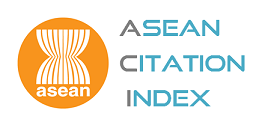Urban Archaeology in Bangkok
คำสำคัญ:
Urban Archaeology, Archaeology in Bangkok, Urban Conservation, Archaeologyบทคัดย่อ
This research aims to review the production of Thai Urban Archaeology in Bangkok. It demonstrates the current situation and background of archaeological studies in the metropolis through the concept of urban archaeology. The findings can be summarised as follows: First, archaeological studies in Bangkok have started systematically in the past 20 years; being urban archaeology and urban conservation. Archaeological projects serve the purposes of development of privately-funded building constructions and civil or government-funded constructions of infrastructural structures in the Rattanakosin area. Second, all of the archaeological excavations were considered as rescue/salvage archaeology or salvage of archaeological evidence before the archaeological sites were destroyed in order to develop, conserve, or improve knowledge regarding historic activities at these sites Third, the assemblage of the ruins and artefacts discovered from the archaeological sites were mainly analysed for the physical structures and dating. An in-depth study and research of the archaeology has not yet been conducted.The aforementioned study of Bangkok was carried out to gather evidence before any construction work took place to develop or improve the area. Very little is known about the archaeology of Bangkok on the local and regional contexts. Finally, the future direction of archaeological work in Bangkok will support conservation and development projects and work more closely with infrastructure development projects such as the mass rapid transit projects. The archaeology in Bangkok should involve people in the urban societies.
ดาวน์โหลด
เผยแพร่แล้ว
รูปแบบการอ้างอิง
ฉบับ
ประเภทบทความ
สัญญาอนุญาต
The opinions and ideas expressed in all submissions published in Thammasat Review are solely that of the author(s) and do not necessarily reflect that of the editors or the editorial board.
The copyright of all articles including all written content and illustrations belong to Thammasat Review. Any individuals or organisation wishing to publish, reproduce and distribute a particular manuscript must seek permission from the journal first.








